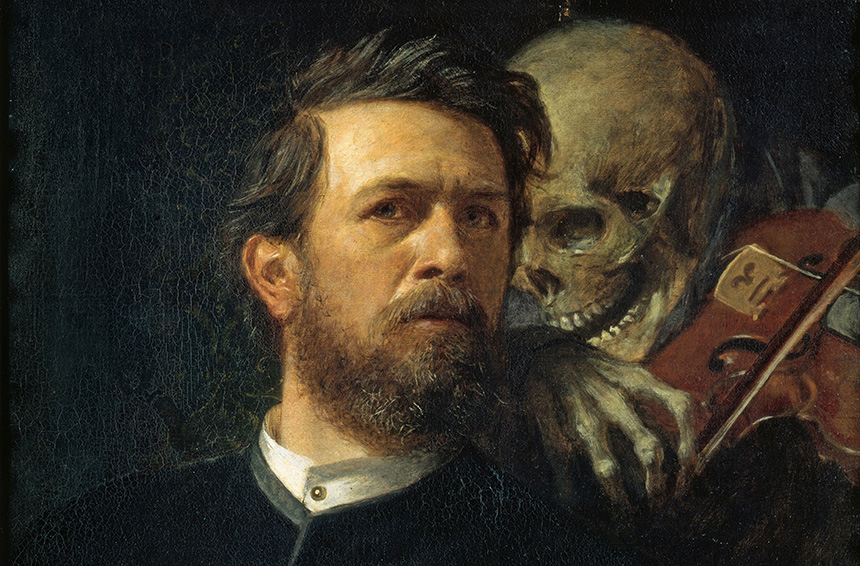One of the painters who renewed the German romanticism: Who is Arnold Böcklin?
He created a unique painting language, especially in his portraits and mythological subjects loaded with symbolic meanings.

(1827-1901) Swiss painter. He is one of the leading representatives of Romanticism in German-speaking countries. He was born in Basel. Between 1845 and 1847, he worked in the workshop of Johann Wilhelm Schirmer, known for his religious paintings. Afterward, he visited cities such as Antwerp, Zurich, and Genoa and made research. He experienced the Revolution of 1848 in Paris. He returned to Basel and remained there until 1850. After that, his life was spent on trips to Switzerland, Germany, and Italy and long-term studies in these countries. He exhibited the portraits he had to make in order to earn a living in Munich in 1859. This exhibition attracted the attention of the public and collectors. He taught painting at the Weimar Academy between 1860 and 1862. In 1866 he produced murals and grotesque masks in Basel. He eventually settled in Italy, where he died in San Domenico, near Fiesole, in 1901.
Arnold Böcklin (16 October 1827 – 16 January 1901) was a Swiss symbolist painter. He was born in Basel. His father, Christian Frederick Böcklin (b. 1802), was descended from an old family of Schaffhausen, and engaged in the silk trade. His mother, Ursula Lippe, was a native of the same city.
Böcklin's apprenticeship works evoke the painting understanding of the German landscape painter Caspar David Friedrich. He created a unique painting language, especially in his portraits and mythological subjects loaded with symbolic meanings. In this respect, it has an important place in 19th-century German painting. Along with Anselm Feuerbach and Hans von Marees, he played a major role in the renewal of German Romanticism. In terms of formal form, it is based on a precise and distinct understanding of contours and progressive, violent color contrasts. With these features, Böcklin differs from the general line of German and French impressionism and is among the pioneers of Expressionism. However, in terms of the content of his paintings, he is not similar to the Expressionists who came after him. The subject of mythological creatures such as satyrs, centaurs, and sirens, intense poetry, and symbolism in landscape paintings are the original aspects of his works.
-----------------------------------------------------
Arnold Böcklin and Darwinism in Germany: The Fabulous Beasts
Swiss Symbolist painter Arnold Böcklin offers an opportunity to consider the implications of Darwinism’s importance for 19th-century art and its iconography.
https://www.thecollector.com/arnold-bocklin-and-darwinism/
